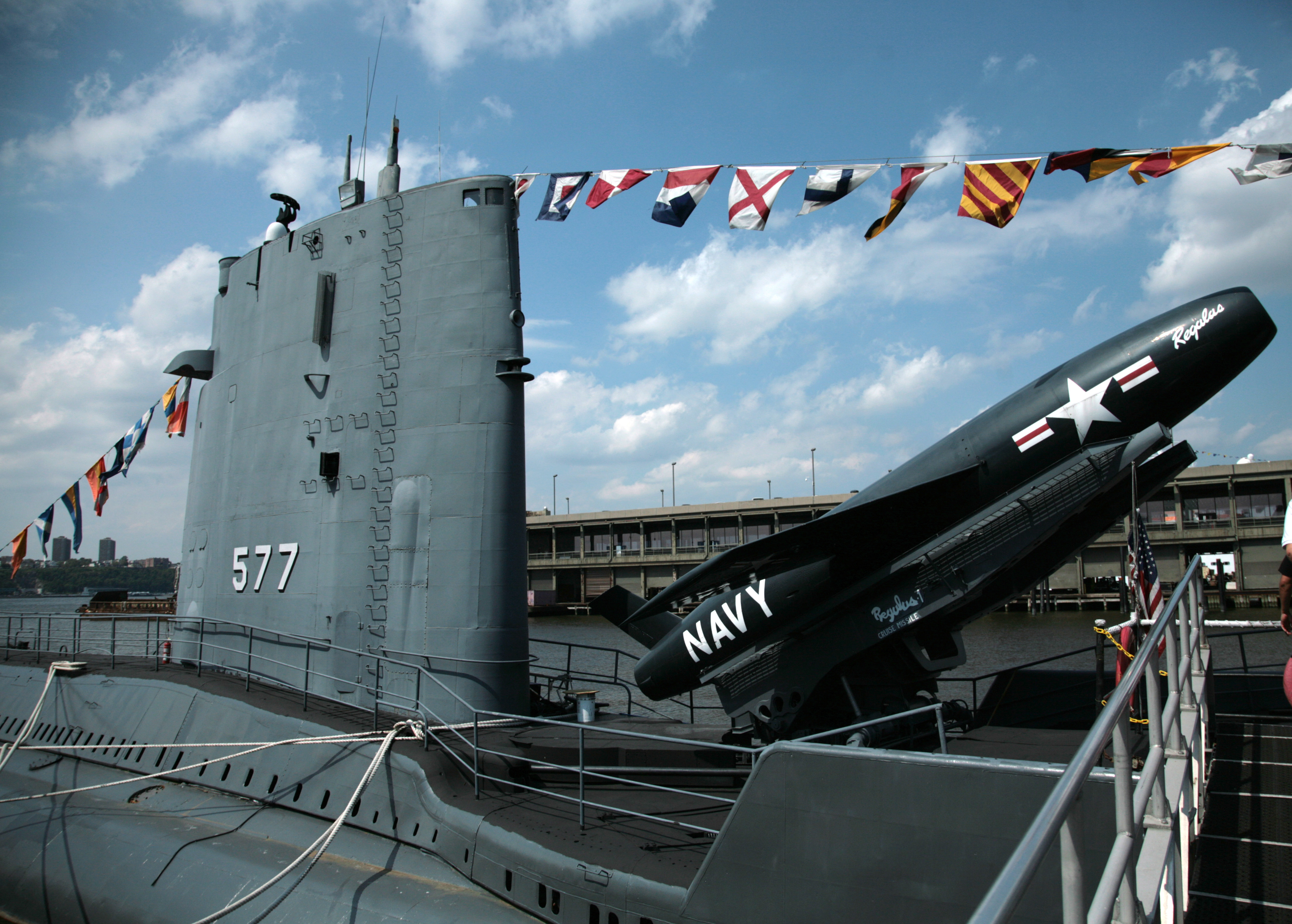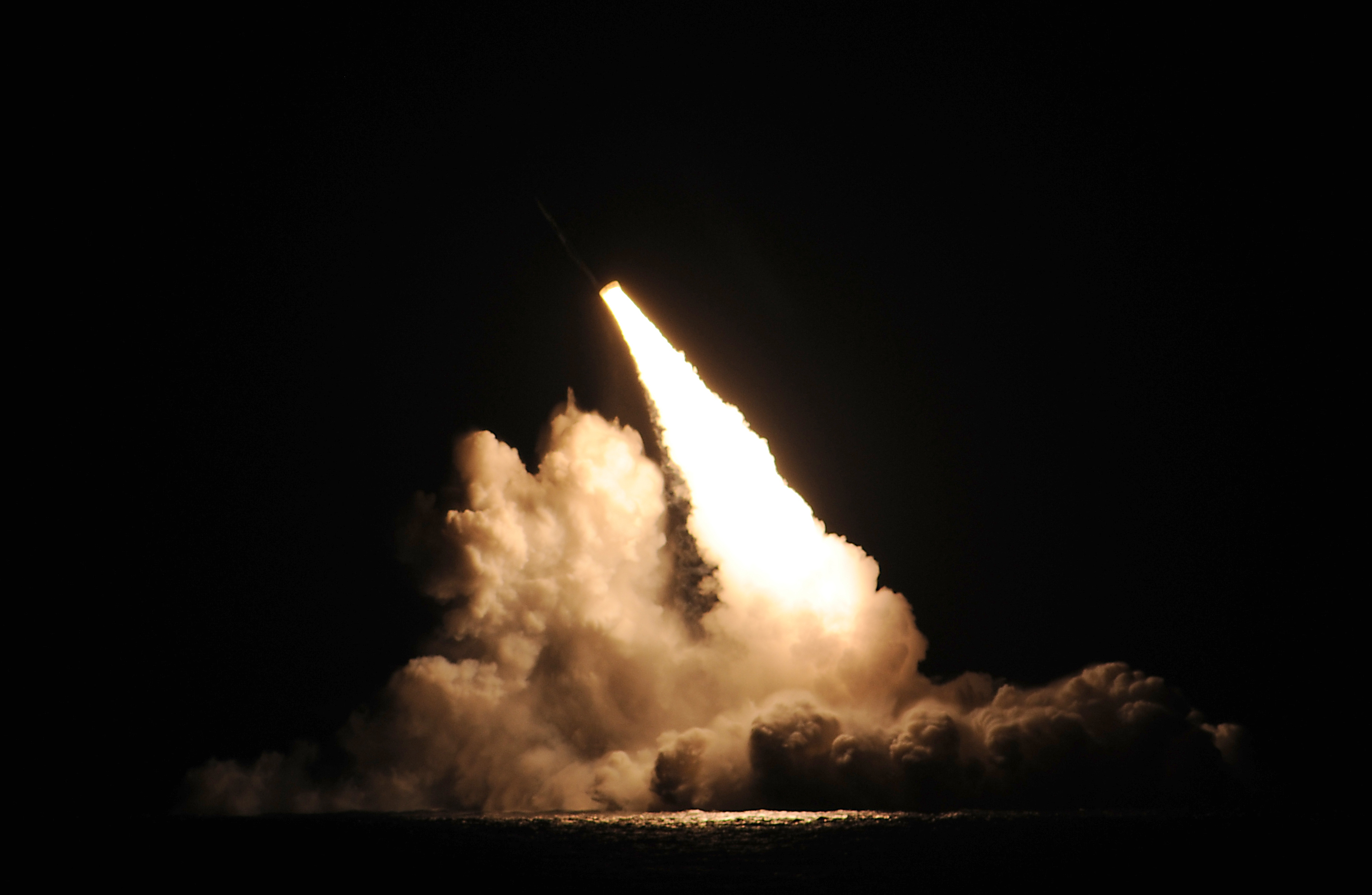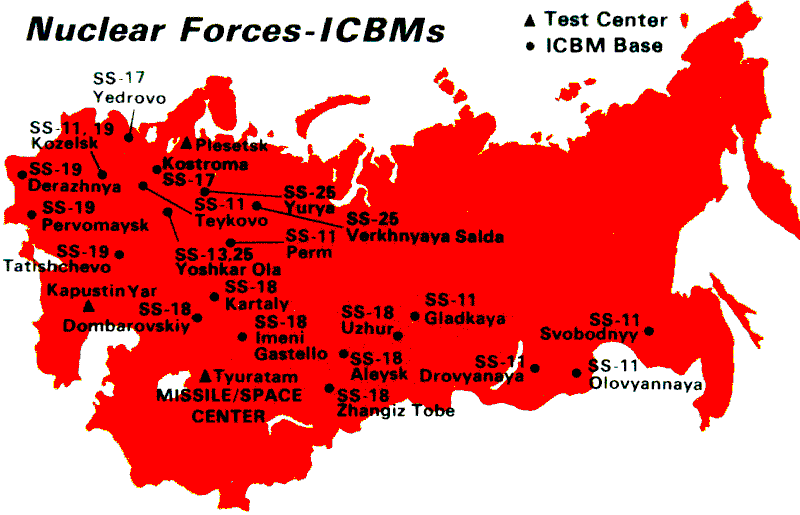|
Dead Hand (nuclear War)
Dead Hand, also known as Perimeter (, with the GRAU Index 15E601, Cyrillic: 15Э601), is a Cold War–era automatic or semi-automatic nuclear weapons control system (similar in concept to the American AN/DRC-8 Emergency Rocket Communications System) that was constructed by the Soviet Union. The system remains in use in the post-Soviet Russian Federation. An example of fail-deadly and mutual assured destruction deterrence, it can initiate the launch of the Russian intercontinental ballistic missiles (ICBMs) by sending a pre-entered highest-authority order from the General Staff of the Armed Forces, Strategic Missile Force Management to command posts and individual silos if a nuclear strike is detected by seismic, light, radioactivity, and pressure sensors even with the commanding elements fully destroyed. By most accounts, it is normally switched off and is supposed to be activated during times of crisis; however, , it was said to remain fully functional and able to serve its p ... [...More Info...] [...Related Items...] OR: [Wikipedia] [Google] [Baidu] |
Russia
Russia, or the Russian Federation, is a country spanning Eastern Europe and North Asia. It is the list of countries and dependencies by area, largest country in the world, and extends across Time in Russia, eleven time zones, sharing Borders of Russia, land borders with fourteen countries. Russia is the List of European countries by population, most populous country in Europe and the List of countries and dependencies by population, ninth-most populous country in the world. It is a Urbanization by sovereign state, highly urbanised country, with sixteen of its urban areas having more than 1 million inhabitants. Moscow, the List of metropolitan areas in Europe, most populous metropolitan area in Europe, is the capital and List of cities and towns in Russia by population, largest city of Russia, while Saint Petersburg is its second-largest city and Society and culture in Saint Petersburg, cultural centre. Human settlement on the territory of modern Russia dates back to the ... [...More Info...] [...Related Items...] OR: [Wikipedia] [Google] [Baidu] |
The Dead Hand
''The Dead Hand: The Untold Story of the Cold War Arms Race and its Dangerous Legacy'' is a 2009 book written by David E. Hoffman, a ''Washington Post'' contributing editor. It was the winner of the 2010 Pulitzer Prize for General Nonfiction. The book is based on a large number of published and unpublished sources, including interviews with political leaders, scientists, military officials and diplomats. The Russian automatic nuclear-control system known as "Dead Hand" is described in detail. See also * ''Dr. Strangelove'' External links * Review in ''New York Times'' [...More Info...] [...Related Items...] OR: [Wikipedia] [Google] [Baidu] |
Deterrence Theory
Deterrence theory refers to the scholarship and practice of how threats of using force by one party can convince another party to refrain from initiating some other course of action. The topic gained increased prominence as a military strategy during the Cold War with regard to the use of nuclear weapons and is related to but distinct from the concept of mutual assured destruction, according to which a full-scale nuclear attack on a power with second-strike capability would devastate both parties. The central problem of deterrence revolves around how to credibly threaten military action or nuclear punishment on the adversary despite its costs to the deterrer. Deterrence in an international relations context is the application of deterrence theory to avoid conflict. Deterrence is widely defined as any use of threats (implicit or explicit) or limited force intended to dissuade an actor from taking an action (i.e. maintain the status quo). Deterrence is unlike compellence, which ... [...More Info...] [...Related Items...] OR: [Wikipedia] [Google] [Baidu] |
Vanguard-class Submarine
The ''Vanguard'' class is a class of nuclear-powered ballistic missile submarines (SSBNs) in service with the Royal Navy. The class was introduced in 1994 as part of the Trident nuclear programme, and comprises four vessels: , , and , built between 1986 and 1999 at Barrow-in-Furness by Vickers Shipbuilding and Engineering, now owned by BAE Systems.''Jane's Fighting Ships, 2004–2005''. Jane's Information Group Limited. p. 794. . All four boats are based at HM Naval Base Clyde (HMS ''Neptune''), west of Glasgow, Scotland. Since the decommissioning of the Royal Air Force WE.177 free-fall thermonuclear weapons during March 1998, the four ''Vanguard'' submarines are the sole platforms for the United Kingdom's nuclear weapons. [...More Info...] [...Related Items...] OR: [Wikipedia] [Google] [Baidu] |
Ohio-class Submarine
The ''Ohio'' class of nuclear-powered submarines includes the United States Navy's 14 ballistic missile submarines (SSBNs) and its 4 cruise missile submarines (SSGNs). Each displacing 18,750 tons submerged, the ''Ohio''-class boats are the largest submarines ever built for the U.S. Navy and are capable of carrying 24 Trident II missiles apiece. They are also the third-largest submarines ever built, behind the Russian Navy's Soviet era 48,000-ton , the last of which was retired in 2023, and 24,000-ton . Like their predecessors the and es, the ''Ohio''-class SSBNs are part of the United States' nuclear-deterrent triad, along with U.S. Air Force strategic bombers and intercontinental ballistic missiles. The 14 SSBNs together carry about half of U.S. active strategic thermonuclear warheads. Although the Trident missiles have no preset targets when the submarines go on patrol, they can be given targets quickly, from the United States Strategic Command based in Nebraska, using se ... [...More Info...] [...Related Items...] OR: [Wikipedia] [Google] [Baidu] |
UGM-133 Trident II
The UGM-133A Trident II, or Trident D5 is a submarine-launched ballistic missile (SLBM), built by Lockheed Martin Space in Sunnyvale, California, and deployed with the United States Navy and Royal Navy. It was first deployed in March 1990, and remains in service. The Trident II Strategic Weapons System is an improved SLBM with greater accuracy, payload, and range than the earlier Trident C-4. It is a key element of the U.S. strategic nuclear triad and strengthens U.S. strategic deterrence. The Trident II is considered to be a durable sea-based system capable of engaging many targets. It has payload flexibility that can accommodate various treaty requirements, such as New START. The Trident II's increased payload allows nuclear deterrence to be accomplished with fewer submarines, and its high accuracy—approaching that of land-based missiles—enables it to be used as a first strike weapon. Trident II missiles are carried by 14 US and 4 British submarines, with 24 missi ... [...More Info...] [...Related Items...] OR: [Wikipedia] [Google] [Baidu] |
UGM-96 Trident I
The UGM-96 Trident I, or Trident C4, was an American submarine-launched ballistic missile (SLBM), built by Lockheed Martin Space Systems in Sunnyvale, California. First deployed in 1979, the Trident I replaced the Poseidon missile. It was retired in 2005, having been replaced by the Trident II. The missile was a three-stage, solid-fuelled system, capable of carrying up to eight W76 warheads in the Mark 4 RB. The first eight s were armed with Trident I missiles. Twelve - and s were also retrofitted with Trident I missiles, which replaced older Poseidon missiles. In 1980, the Royal Navy requested Trident I missiles under the Polaris Sales Agreement. In 1982, the agreement was changed to supply Trident II instead. See also * Trident (missile) * UGM-133 Trident II The UGM-133A Trident II, or Trident D5 is a submarine-launched ballistic missile (SLBM), built by Lockheed Martin Space in Sunnyvale, California, and deployed with the United States Navy and Royal Navy. It was f ... [...More Info...] [...Related Items...] OR: [Wikipedia] [Google] [Baidu] |
Launch On Warning
Launch on warning (LOW), or fire on warning, is a strategy of nuclear weapon retaliation where a retaliatory strike is launched upon warning of enemy nuclear attack and while its missiles are still in the air, before detonation occurs. It gained recognition during the Cold War between the Soviet Union and the United States. With the invention of intercontinental ballistic missiles (ICBMs), launch on warning became an integral part of mutually-assured destruction (MAD) theory. US land-based missiles can reportedly be launched within 5 minutes of a presidential decision to do so and submarine-based missiles within 15 minutes. History Before the introduction of intercontinental ballistic missiles (ICBMs), the US Strategic Air Command (SAC) had multiple bombers on patrol at all times in a program known as Operation Chrome Dome. In the event of a Soviet nuclear strike, SAC would order its already-airborne bombers to fly to the other country and to drop their nuclear payload on p ... [...More Info...] [...Related Items...] OR: [Wikipedia] [Google] [Baidu] |
Pre-emptive Nuclear Strike
In nuclear strategy, a first strike or preemptive strike is a preemptive surprise attack employing overwhelming force. First strike capability is a country's ability to defeat another nuclear power by destroying its arsenal to the point where the attacking country can survive the weakened retaliation while the opposing side is left unable to continue war. The preferred methodology is to attack the opponent's strategic nuclear weapon facilities (missile silos, submarine bases, bomber airfields), command and control sites, and storage depots first. The strategy is called counterforce. Historical background ''First-strike attack'', the use of a nuclear first strike capability, was greatly feared during the Cold War between NATO and the Soviet Bloc. At various points, fear of a first strike attack existed on both sides. Misunderstood changes in posture and well understood changes in technology used by either side often led to speculation regarding the enemy's intentions. 1948– ... [...More Info...] [...Related Items...] OR: [Wikipedia] [Google] [Baidu] |
Counterforce
In nuclear strategy, a counterforce target is one that has a military value, such as a launch silo for intercontinental ballistic missiles, an airbase at which nuclear-armed bombers are stationed, a homeport for ballistic missile submarines, or a command and control installation. The intent of a counterforce strategy (attacking counterforce targets with nuclear weapons) is to conduct a preemptive nuclear strike which has as its aim to disarm an adversary by destroying its nuclear weapons before they can be launched. That would minimize the impact of a retaliatory second strike. However, counterforce attacks are possible in a second strike as well, especially with weapons like UGM-133 Trident II. A counterforce target is distinguished from a countervalue target, which includes an adversary's population, knowledge, economic, or political resources. In short, a counterforce strike is directed against an adversary's military capabilities, while a countervalue strike is directed against ... [...More Info...] [...Related Items...] OR: [Wikipedia] [Google] [Baidu] |
UGM-73 Poseidon
The UGM-73 Poseidon missile was the second US Navy nuclear-armed submarine-launched ballistic missile (SLBM) system, powered by a two-stage solid-fuel rocket. It succeeded the UGM-27 Polaris beginning in 1972, bringing major advances in warheads and accuracy. It was followed by Trident I in 1979, and Trident II in 1990. Development A development study for a longer range version of the Polaris missile—achieved by enlarging it to the maximum possible size allowed by existing launch tubes—started in 1963. Tests had already shown that Polaris missiles could be operated without problems in launch tubes that had their fiberglass liners and locating rings removed. The project was given the title Polaris B3 in November, but the missile was eventually named Poseidon C3 to emphasize the technical advances over its predecessor. The C3 was the only version of the missile produced, and it was also given the designation UGM-73A. Slightly longer and considerably wider and heavier than Po ... [...More Info...] [...Related Items...] OR: [Wikipedia] [Google] [Baidu] |
UGM-27 Polaris
The UGM-27 Polaris missile was a two-stage solid-fueled nuclear-armed submarine-launched ballistic missile (SLBM). As the United States Navy's first SLBM, it served from 1961 to 1980. In the mid-1950s the Navy was involved in the Jupiter missile project with the U.S. Army, and had influenced the design by making it squat so it would fit in submarines. However, they had concerns about the use of liquid fuel rockets on board ships, and some consideration was given to a solid fuel version, Jupiter S. In 1956, during an anti-submarine study known as Project Nobska, Edward Teller suggested that very small hydrogen bomb warheads were possible. A crash program to develop a missile suitable for carrying such warheads began as Polaris, launching its first shot less than four years later, in February 1960. As the Polaris missile was fired underwater from a moving platform, it was essentially invulnerable to counterattack. This led the Navy to suggest, starting around 1959, that they ... [...More Info...] [...Related Items...] OR: [Wikipedia] [Google] [Baidu] |




